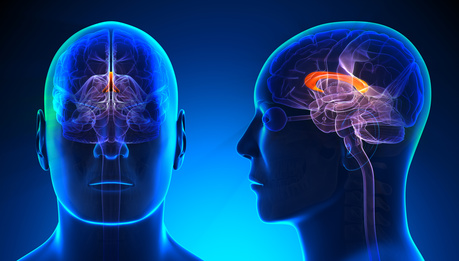
A robot radiotherapy “off” the pain of trigeminal neuralgia . This instrumentation is available to the Italian Diagnostic Center (CDI) of Milan, is a medical technology presented at the international conference promoted today to the CDI. There is also talk of ultrasound and laser against brain tumors, an innovative wireless computer-brain interface and rehabilitation virtual reality
 Milan, 11 November 2015 – More than 90% of patients with trigeminal neuralgia treated to Italian Diagnostic Center in Milan with the Cyberknife, an innovative robot for radiotherapy, they are freed from the pain caused by this disease. This tool, thanks to the use of radiation, has the great advantage for patients being unobtrusive, as is surgery, and not requiring the use of drugs. It is a major step forward in the treatment of this disease, which affects a nerve in the face and is characterized by pain so intense as to be known in folklore as “the suicide disease”, seen as the only way to break free from the suffering that entails .
Milan, 11 November 2015 – More than 90% of patients with trigeminal neuralgia treated to Italian Diagnostic Center in Milan with the Cyberknife, an innovative robot for radiotherapy, they are freed from the pain caused by this disease. This tool, thanks to the use of radiation, has the great advantage for patients being unobtrusive, as is surgery, and not requiring the use of drugs. It is a major step forward in the treatment of this disease, which affects a nerve in the face and is characterized by pain so intense as to be known in folklore as “the suicide disease”, seen as the only way to break free from the suffering that entails .
The results of this treatment are one of the most interesting science topics presented today in the conference entitled “International focus on neurotranslation”, promoted by the Italian Diagnostic Center, which brings together experts from the United States, France, Italy , Turkey and many other countries around the world, to exchange views on how to translate the most futuristic frontiers of science in technologies that may improve understanding of the brain and diagnosis and treatment of diseases that can strike him.
Among the speakers the conference will be also John Adler, a professor at Stanford University (USA) and inventor of the Cyberknife. The tool is a real “scalpel” virtual which employs radiation: it is constituted, in fact, by a linear accelerator mounted on a robotic arm movable able to move in all directions around the patient, so as to be placed in positions 1,500 different.
Among the new technologies presented at the conference sponsored by the CDI, as well as Cyberknife, there are also the use of ultrasound and lasers to fight brain tumors; new developments in MRI and CT scans that make them able to “see” at the microscopic level and slight alterations of the brain so far invisible to them; tools to interface directly with the brain and the computer to “translate” the thought into commands for machines and appliances; robotic instruments and machines for virtual reality for rehabilitation of trauma neurologists.
The radiosurgery of the trigeminal nerve
The Cyberknife sends precise about 150 radiation beams thick millimeter on the trigeminal nerve sick, “off” in this way the pain that afflicts the chronically ill.
Also, since the treatment is non-invasive, does not require hospitalization and the patient can return to after the session own home. Six months after the procedure more than 90% of patients treated was freed from pain or has only sporadic and mild symptoms. The incidence of complications is much lower than that of traditional interventions (no mortality, no cases of hemorrhage or infection, rare complications)
According to data from the Institute for Public Health (American National Institute for Health ) trigeminal neuralgia affects every year 1.2 people per 10,000. It is estimated, therefore, that in Italy there are more than 7000 new cases annually.
Ultrasonic, Laser and radiosurgery: weapons against non-invasive brain tumors
Ultrasonic focused high intensity allow to heat in a targeted brain tumors up to “burn”, thus eliminating it without the need to open the skull. During this process an MRI thermal controls that heat is localized and healthy tissues of the brain are well preserved. Next to this technique are developing treatments using lasers to remove tumors.
In addition to laser and ultrasound, radiosurgery is a significant step forward in the treatment of brain tumors because it is not invasive and allows intervene in brain areas otherwise unreachable. Traditionally, it was administered in a single session, but today it has been shown that it can be used in most sessions dividing the dose. This lets you treat tumors with a more complex or larger volume, aggredendoli in several sessions.

Dr. Pantaleo Romanelli
New frontiers of imaging
MRI and CT scans become more “intelligent” than in the past: today, in fact, a high percentage of patients with severe head trauma suffer from symptoms whose cause you are unable to detect through these diagnostic tools. For this reason, researchers at Newcastle University have developed an advanced algorithm that makes it more sensitive magnetic resonance and allows you to analyze various parameters.
The tool performs a mapping and a more accurate analysis of the brain compared to traditional magnetic resonance imaging, dividing it into 16 different areas of interest. In this way the instrument can detect traumatic lesions of the brain where the traditional technology today is not capable.
In addition, technologies are being developed to make these instrumentations sensitive at the microscopic level: in fact, thanks to the use thin beam of radiation generated by a particular particle accelerator, called synchrotron, researchers ESRF in Grenoble, the Ludwig Maximilians University of Monaco and Pantaleo Romanelli managed to make generate CT images showing the anatomy of cellular scale: the images obtained with CT synchrotron be almost equivalent to those seen through the microscope.
New interfaces to communicate with the brain
When the body does something to ‘interior of the brain neurons are activated and begin to communicate with each other through electrical impulses. This creates an electric field that can be recorded with a popular tool as the electroencephalogram. In this way, researchers at the University of Salerno record what happens inside the brain during different actions but also moods. The goal of this “brain reading” is to develop intelligent objects, especially at home, anticipating the needs of people. It is a line of technological development of particular interest to help people with disabilities to be more independent in their homes.
It is also being tested the first brain-computer interface wireless. The new tool, the result of a project completely made in Italy, has potential applications ranging from prevention of epileptic seizures, the use of robotic limbs, in-depth study of brain function and represents a significant step forward compared to other technologies currently experiments that require transmission cables, a solution that involves limitations in movement and risk of infection for the person.
Virtual reality and robots for rehabilitation
After serious accidents significant neurological injury you can try to restore the ability of a patient with specific exercises stimulating his brain to recover lost skills. To do this is very important to use a wide range of physical exercises and sensory stimuli, such as tactile sensations, smells and sounds.
For this purpose, the researchers of the structure for neurological rehabilitation Villa Beretta Hospital Valduce Como developed exercises in virtual reality and robotic instruments, wearable by the patient. The use of virtual reality also allows rehabilitation at home, in a more comfortable environment for the patient and a savings of days of hospitalization.
Epilepsy and genetics
More than half the cases of epilepsy are based upon a genetic component: for this reason, researchers at the Giannina Gaslini in Genoa are mapping the DNA of people affected by this disease in order to identify the genetic variants that may be one of its causes. In this way, the researchers intend to identify a tool for early detection of the disease and, at the same time, a new target to develop drugs and treatments that can cure this disease.
Immunotherapy of cancer
This therapy is based on trying to “teach” the body’s immune system to attack the tumor as if it were a virus or a bacterium and is becoming increasingly more effective for glioblastomas, one of the forms most aggressive brain tumor. During the conference, researchers at Johns Hopkins University in Baltimore (USA) have some data on the efficacy of this new treatment.
An electrical stimulation to improve vision
New technology improves vision of patients who have suffered trauma to the optic nerve: researchers at the University of Istanbul have shown that its electrical stimulation through the cornea leads to an increase of insight and an expansion of the visual field of view of about 25%.
Source: Press Office
No comments:
Post a Comment